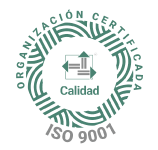The call center is vital to any business, whether a startup or an established company.
Even if you are an SMB or an enterprise-level company, you still most likely have a customer service department that receives inbound calls from your customers.
This article will review crucial metrics you need to measure and report to get valuable insights into your call center’s performance.
What Are Inbound Call Centers Metrics & KPIs
Inbound call center services are customer service divisions within companies that handle incoming customer calls.
An inbound call center agent’s primary duties and responsibilities are to provide efficient and effective customer service, helping customers with inquiries or problems quickly, efficiently, and professionally.
To measure the performance of any inbound call center, you should track specific metrics.
These metrics help gauge the level of success in meeting customer needs and provide insight into what areas may need improvement.
Listed below are the top 5 metrics you need to monitor.
Average Call Response Time
Average call response time is essential for measuring inbound call center performance. This metric indicates how long it takes for a customer service representative or automated system to answer a customer call.
A higher average response time may indicate that the inbound call center needs to be adequately staffed or that the customer service representatives should take longer to answer the calls.

Average Call Length
Another metric to measure performance is average call length, which measures how long each call lasts from start to finish.
This is an important metric because it helps you determine how long customers are waiting for their calls to be answered, which will help you improve employee productivity.

Call Abandonment Rate
The call abandonment rate is the percentage of calls that were not answered by an agent or abandoned before being answered by an agent. The industry standard is to have at most 5 percent of calls left to be considered a good performer.

First Call Resolution
FCR measures how often an agent resolves a customer’s issue on the first call. This is important because it demonstrates how well your agents can resolve issues without transferring or escalating calls.
A high FCR means providing excellent service and delighting customers with quick resolutions. Conversely, a low FCR means that more calls need to be handled by someone other than an agent to resolve them.

Customer Satisfaction Score
Inbound call center jobs use this metric because it indicates how satisfied customers are with their experience with your organization.
It would be best to base customer satisfaction on surveys that measure whether the customer was satisfied with their experience.
There are several different ways to evaluate customer satisfaction, such as Net Promoter Score (NPS), Customer Effort Score (CES), and Customer Satisfaction Score (CSAT).
In addition, you can measure it using surveys, focus groups, or asking customers to appraise their experience on a measure of one to ten.

Agent Schedule Adherence
You should schedule agents for the number of hours they’re needed to handle calls and emails.
If unavailable when you schedule them, they’ll have to work overtime, or their shifts will be covered by other agents, leading to poor performance and higher costs.
To solve this problem, check your scheduling software’s availability reports daily after morning meetings and make adjustments as necessary.

How to choose the correct inbound call center solution for your business?
Choosing the right inbound call center solution for your business can be daunting. With many available options, it can take time to determine which solution is best for your business. To make the right decision, you must consider all the options available.
Start by researching the various available solutions, and consider both the advantages and disadvantages of each.
Make sure to consider the cost of the solution and the long-term implications of the decision.











